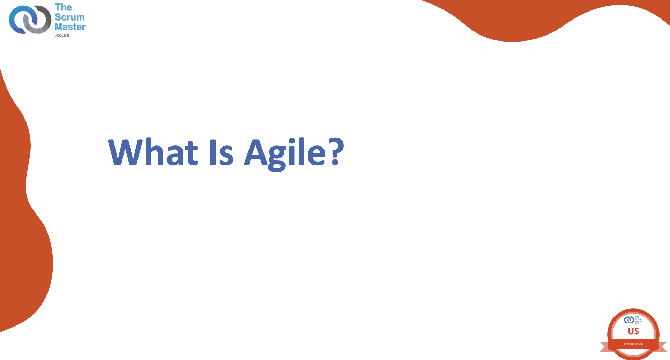Scrum
1M
372

Image Credit: Scrum
What Is Agile? - Ultimate Scrum eLearning Course (1/35)
- Agile is a way of dealing with and succeeding in an uncertain and changing environment, understanding what is happening in your environment and adapting as you proceed.
- Agile frameworks like Scrum help organizations deliver products earlier and at lower costs, allowing them to rapidly adapt to meet the customers’ needs.
- The Agile Manifesto was created in 2001, in response to heavyweight, documentation-driven software development processes.
- Traditional management practices are not easily replaced. Agility means embracing change and identifying and accepting certain risks and is uncomfortable for people using traditional management practices.
- Agile is a set of values and principles that can be compared to a philosophy and is open to interpretation.
- The most common benefits of an Agile approach comprise faster delivery, higher productivity, quality, engagement, motivation, lower costs, less waste, improved stakeholder satisfaction, predictability, faster feedback and learning cycles, and reduced risk.
- Scrum has emerged as the default way for those organizations to become more Agile. Scrum contains specific rules to enable greater Agility.
- There is not a one-size-fits-all way to be Agile. It depends on the desire for change and risk tolerance.
- TheScrumMaster.co.uk’s Ultimate Scrum & Agile eLearning Courses will help learn Scrum & Agile and pass major assessments to gain certification.
- The introductory Ultimate Scrum eLearning Course is free!
Read Full Article
22 Likes
For uninterrupted reading, download the app